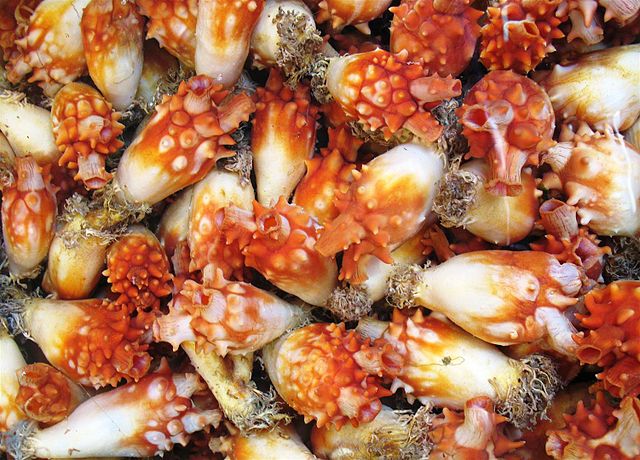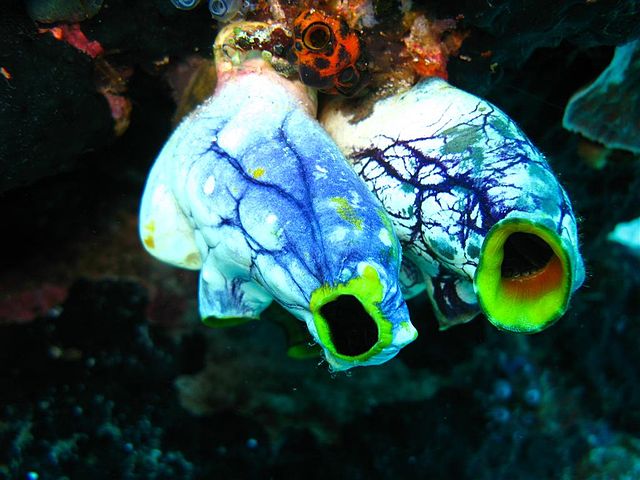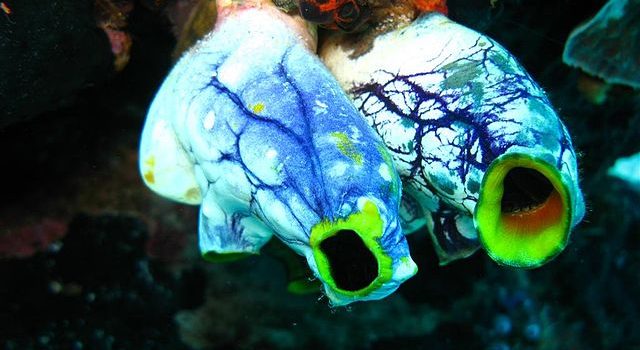Well done to six-year-old Daniel who correctly identified the Mystery Creature (again). Daniel really knows his animals! The Mystery Creature was a sea squirt… a very interesting animal, here are just a few reasons why.
- Sea squirts come in many shapes and sizes, there are more than 3,000 species of them. They are officially called tunicates (the name refers to their tunic like exterior). Depending on their size and shape they are also called sea pork, sea tulips, sea pineapples and sea liver. Sea squirts get their name from their tendency to compress their bodies and squirt out water when disturbed.

Sea Pineapple: Image credit: Project Manhattan; Image source: wiki commons
- Tunicates are widely distributed through the World’s oceans, but most are found in warm seas. Although there are exceptions, most sea squirts spend their adult lives attached to a solid object, usually on the seabed.
- They start their lives in egg form but quickly grow into tadpole-like larvae (often within a matter of hours), with a tail and a basic type of backbone, called a notochord. In this form, they are unable to feed and their primary function is to find a suitable place to attach themselves, for the rest of their lives. Some species, such as the larvaceans never anchor, instead, they retain their tails which help to propel them through the water.
- Once the sea squirt larva (tadpole-like form) finds a suitable place to anchor, it will attach, head first, glueing itself in place with a sticky like secretion. Next comes a large transformation, it reabsorbed much of its body (including its tail, notochord and basic eye) and recycles them into its adult structure.
- The adult structure of most sea squirts consists of a sac-like body with two siphons – water is sucked into one and forced out of the other. Most sea squirts are filter feeders, they take in seawater and filter our plankton and nutrients, ejecting the filtered water back out of their bodies.

Image credit: Silke Baron; Image source: Wiki commons
- During the transformation from larva to adult, the sea squirt reabsorbed many parts of its body,transforming them into adult organs. Sea squirts are known for ‘eating their own brain‘ in this manner, as they reabsorb the basic brain of the larva during the transformation. It is not quite as simple, or dramatic as the statement suggests, though, adults do contain a hollow cerebral ganglion, a brain type structure with nerves feeding out to certain parts of the body.
- Most sea squirts are hermaphrodites, meaning that they contain both male and female organs. Many can also reproduce by budding, a process whereby a new animal buds off and grows from the parent, eventually disconnecting once fully formed.
- Although there are some solitary species of sea squirts, most live in groups or colonies.
Thanks again to Daniel for correctly identifying this Mystery Creature, it really is quite an amazing animal. Check back next week for another new Mystery Creature!
